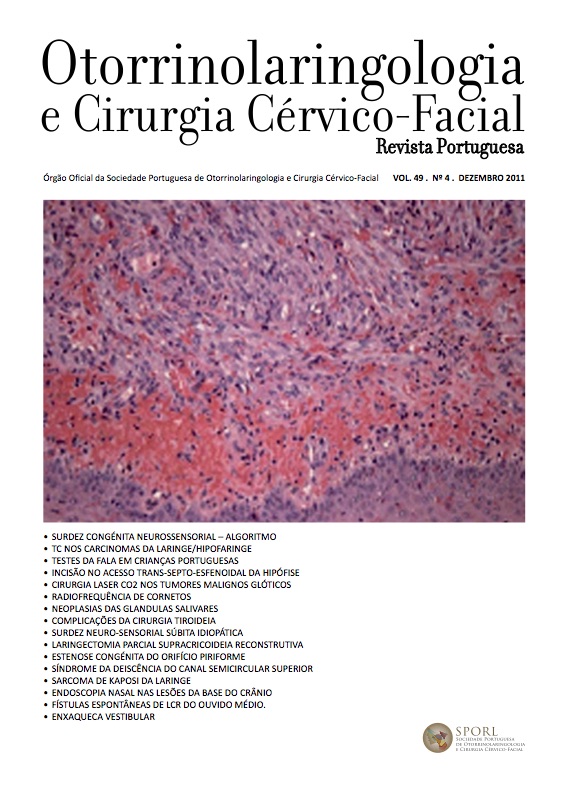Nasal obstruction in neonates: Two cases report of congenital nasal pyriform aperture stenosis
DOI:
https://doi.org/10.34631/sporl.199Keywords:
congenital nasal pyriform aperture stenosis, neonates, single central maxillary incisorAbstract
Congenital nasal pyriform aperture stenosis (CNPAS) is a rare form of nasal obstruction in neonates who are obligate nasal breathers, that may become a potential lifethreatening condition. Differential diagnosis must include the more common occurrence of choanal atresia. CNPAS is often characterized by episodic apnea and cyclical cyanosis, and the diagnosis is confirmed upon imaging findings. CNPAS may appear isolated or associated with cranio-facial anomalies, hypopituitarism and abnormal karyotype. Surgery should be considered if patients do not improve with medical treatment. The main purpose of this article is to report two cases of CNPAS. In the first case, the stenosis was diagnosed after birth, there were no other anomalies identified and the child overcame the situation with topical treatment only. In the second case the child presented another midline anomaly, consisting in one single central maxillary incisor. Due to the degree of obstruction and clinical symptoms it was performed a sublabial surgical approach of the stenosis. Both children have no complaints so far.
Downloads
References
Shikowitz MJ. Congenital nasal pyriform aperture stenosis: diagnosis and treatment. International Journal of Pediatric Otorhinolaryngology 2003; 67:635-639.
Brown OE, Myer III CM, Manning SC. Congenital nasal aperture stenosis. The Laryngoscope 1989; 157:39-44.
Belden CJ, Mancuso AA, Schmalfuss IM. CT features of congenital nasal piriform aperture stenosis: initial experience. Radiology 1999; 213:495-501.
Baker KA, Pereira KD. Congenital nasal pyriform aperture stenosis. Operative Techniques in Otolaryngology 2009; 20:178-182.
Osovky M, Aizer-Danon A, Horev G, Sirota L. Congenital pyriform aperture stenosis. Pediatr Radiol 2007; 37:97-99
Lee KS, Yang CC, Huang JK, Chen YC. Congenital pyriform aperture stenosis: surgery and evaluation with three-dimensional computed tomography. The Laryngoscope 2002; 112: 918-21.
Devambez M, Delattre A, Fayoux P. Congenital nasal pyriform aperture stenosis: Diagnosis and Management. Cleft Palate Craniofac J 2009; 46(3): 262-7.
Lo FS, Lee YJ, Lin SP, Shen EY et al. Solitary maxillary central incisor and congenital nasal pyriform aperture stenosis. Eur J Pediatr 1998; 157;39-44.
Arlis H, Ward RF. Congenital nasal pyriform aperture stenosis: isolated abnormality vs development field defect. Arch Otolaryngol Head and Neck Surg 1992; 118: 989-91.
Hui Y, Friedberg J, Crysdale WS. Congenital nasal pyriform aperture stenosis as a presenting feature of prosencephaly. Int J Pediatr Otorhinolaryngol 1995; 31: 263-274.
Ampudia JMC, Gonzalez PC, Rodriguez H, Poladura MM et al. Anales de Pediatria 2009; 71(3):221-3.






